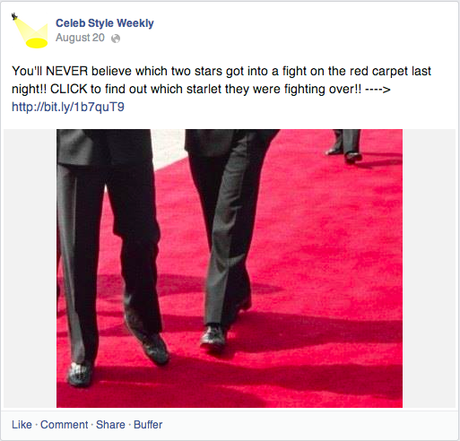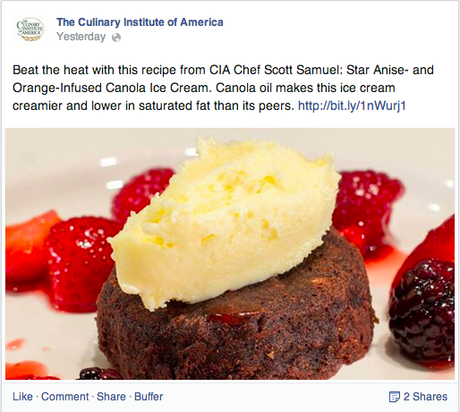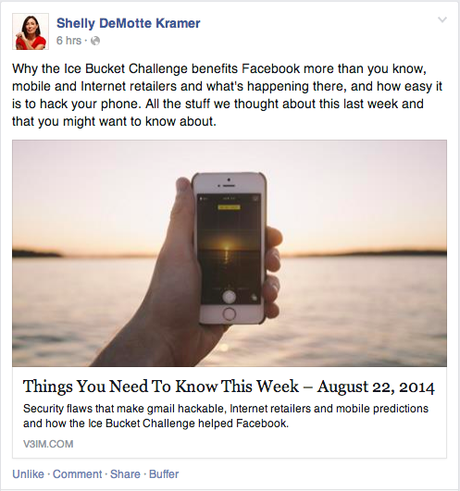 Yesterday Facebook announced yet another change to the way stories are displayed in the News Feed that takes aim at click-bait content. This change and the best practices for link sharing moving forward impacts anyone who manages a brand page and the way we collectively share content moving forward. According to a Facebook news release dated August 25, this move is intended to weed out stories that readers categorize as spammy and content they don’t want to appear in their news feeds. This change will purportedly:
Yesterday Facebook announced yet another change to the way stories are displayed in the News Feed that takes aim at click-bait content. This change and the best practices for link sharing moving forward impacts anyone who manages a brand page and the way we collectively share content moving forward. According to a Facebook news release dated August 25, this move is intended to weed out stories that readers categorize as spammy and content they don’t want to appear in their news feeds. This change will purportedly:
- Reduce the click-baiting headlines
- Help people see links shared on Facebook in the best format.
What is a click-baiting headline?
Click-baiting is when a publisher shares a link with copy that encourages people to click on the link without offering a clear idea of what the article is all about. The publisher’s primarily objective is to appeal to peoples’ natural curiosity and make them want to click on the link. This type of post usually achieves a prime position on the news feed because of the high level of engagement it receives through clicks. I don’t know about you, but I categorize that BuzzFeed crap as click-bait headlines through and through. I’m betting chances are slim, though, that we’ll see less of that. I digressed, fueled by my dislike of BuzzFeed. Here’s an example of what they are talking about:

Based on Facebook’s initial survey, the reportedly found that 80% of the time, people would rather see headlines that help them better decide whether they want to click through to read the full article. Well, that’s no surprise.
How will Facebook determine if your headline is flagged as click-bait?
There will be two factors that will help Facebook determine whether it considers your headline click-bait. If a user clicks on your link and quickly returns back to the Facebook News Feed, it will likely be flagged as click bait. This will be one of the indications for ranking articles with links. On the opposite end of the spectrum, if people click on a link and spend a long time away from Facebook reading the article, it is less likely to be labeled as click-bait.
The other factor is engagement. If people don’t comment, like or share a particular article that has recorded a large number of clicks, then it will likely be considered click-bait. This indicates to Facebook that since the article was not deemed valuable enough to be shared by users, it is most likely not about what is stated in the headline.
What Format Should You Use When Sharing Links?
If you want to make sure links you share on Facebook will be seen by as many users as possible, you should follow the format Facebook is recommending.
Here are two ways that most people and brand pages share their links:

One is by adding the link within the text portion of the shared post and adding an image before sharing.
The other way, and the one recommended by Facebook, is by adding information contained in the headline and then pasting in the link to the article. This automatically shows the image and additional information associated with the link. And here’s a handy dandy example of that:

Another reason this format is preferred is it allows people to access the links easily using their mobile devices.
So next time you post a link on Facebook, be sure to use the link format described above. Avoid resorting to sharing click-bait headlines or your post is likely to be buried deep in News Feed.
Facebook has always been about changing things up, so this, like any one of the many changes we’ve seen is but one of many more to come. If it means less junk, I like it. What do you think?
More resources on this topic:
Facebook cracks down on click-baiting, promotes native link format – Inside Facebook
Facebook News Feed Reduces Click-Bait Headlines
photo credit: dreamsjung via photopin cc
Facebook Changes News Feed Again: Beware the Click-Bait is a post from: V3 Kansas City Integrated Marketing and Social Media Agency

